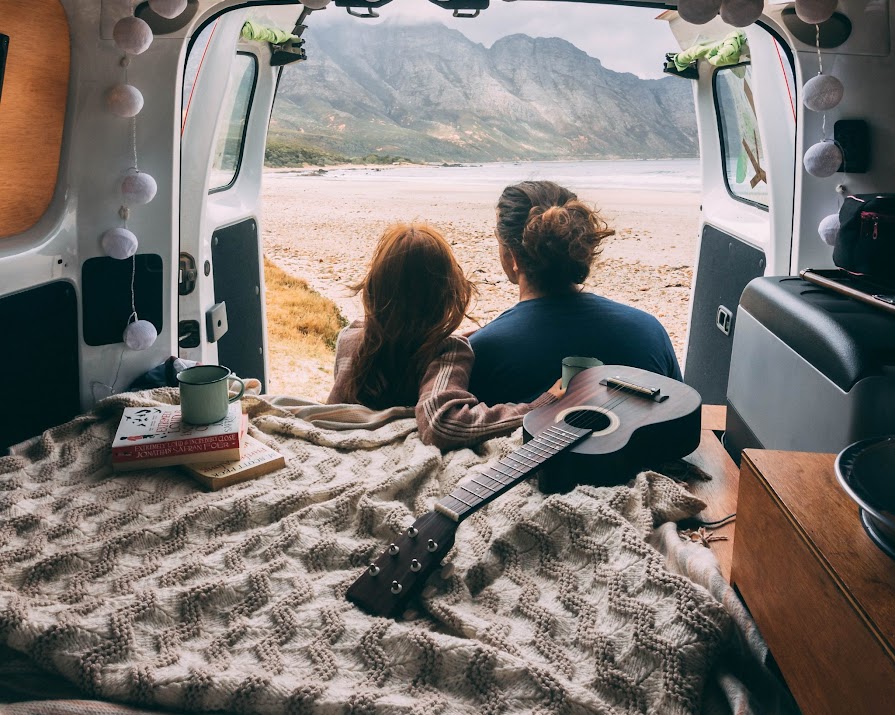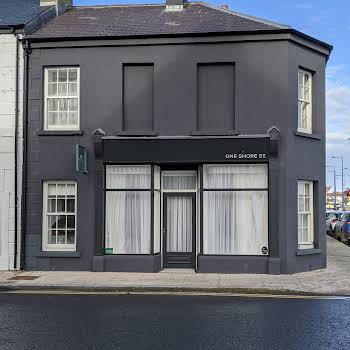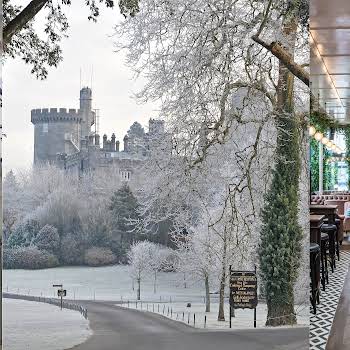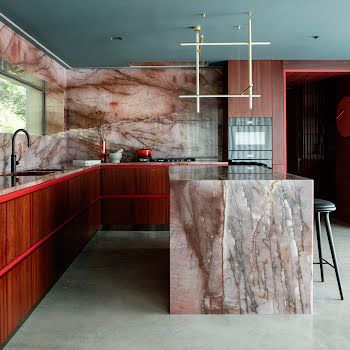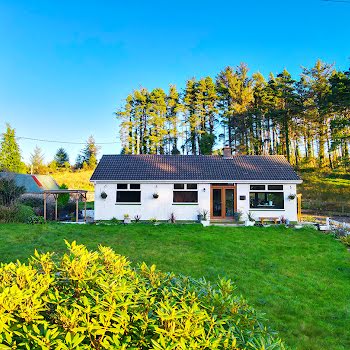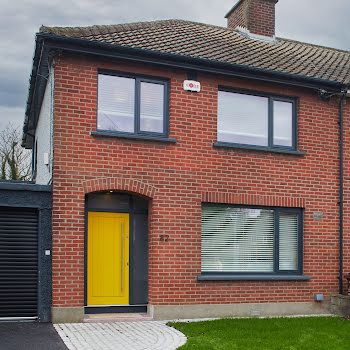Thinking of converting a campervan? Here’s what you need to know (from someone who has done it)
Considering taking on a DIY campervan conversion in Ireland? Here are a few things to keep in mind before you even start looking for a van.
Summer 2021 saw a huge boom in campervans and although many of us are booking flights abroad for this year, a campervan holiday is still on many people’s wishlist.
Ideal for staycationing, they have that idyllic, open-road feel. You can pretty much take them anywhere, whether that’s to some unexplored part of Ireland or on the ferry to Spain or France. Factory conversions and already-converted vans have flown up in price, which means many are turning to DIY conversions, my partner and I included.
We spent every weekend through spring 2021 working on our van to get it ready for some road trips last summer. However, there are a number of steps (read: hoops) we had to get through in order to get our new campervan on the road. Here’s what we learned.
Unfortunately, the actual conversion process is really the simplest bit. So long as you have space to do it and an idea of what you want, you can get stuck right in. You’ll inevitably make mistakes but they’re all learning curves and if you have the time to put into it, it’s a very fulfilling experience.
When you really start pulling your hair out though is when you get to the paperwork. Between getting your van officially converted with Revenue to getting a new logbook and applying for insurance, there were a number of things we wish we had known earlier.
We’ve been quietly keeping track of the many oh-I-wish-we-knew-that-thens throughout the conversion in the hopes of saving the next person the heartache (and many, many minutes on hold).
Have a read of these before diving into your campervan conversion.
Camper owner requirements
Campervan insurance and tax are typically fairly priced – €350-€500 for insurance and a flat fee of €102 for tax. This is because you are not expected to be using your camper as your primary mode of transport.
However, if you’re not over 25 with 5 years’ no claims bonus and an existing primary vehicle insured under your name, you will really struggle to get any kind of insurance quote at all, even if you buy a brand new, factory-built camper. So consider this before you decide to invest. This sounds cold but trust me, I’m saving you a lot of heartache.
Choose your vehicle wisely
When you’re looking for a van to convert into a camper, unless you have a sizeable budget, think twice before converting a commercial vehicle.
First of all, in order to officially convert any kind of van into a camper, you will need to get an engineer’s report to sign off on the conversion and they are much less eager to sign off on commercial vehicle conversions than something like a minibus.
Secondly, a commercial vehicle is typically windowless and Revenue requires a side window and rooflight in order to accept a commercial-to-camper conversion. So unless you’ve got the skills (and more importantly, the tools and the shelter) to put in windows yourself, beware of taking this on. This is Ireland, it is guaranteed to rain on the day you decide to cut the rooflight hole and any jobs you need the professionals to do will add a few thousand euro to your budget. If you do decide to have a go, check out a few scrap yards and see if you can get the windows second-hand, it’s much cheaper.
Ideally though, look for a minivan with all its windows – it’s much easier to block a few up than it is to put them in. Also, look for a van with an extra high roof that you can stand up in. As well as making for a more comfortable space to live and move around in, a lot of insurance companies ask for a minimum standing height of 1.8 metres before insuring it. Insurance companies have a lot of specific requirements but this one is not something you can change during the conversion process. Not every insurer requires this but without the height you will narrow your insurer selection.
First steps
Now that you have bought your van, you’re probably itching to get stuck into it. However, you will now need to fulfil two different sets of requirements – the Revenue’s and your insurer’s.
The first official step to convert your van into a camper is to get an engineer’s report to sign off on the conversion for the Revenue (usually a CRVT centre will do this kind of report). You then send the report and a series of required photos to Revenue requesting a change of particulars. Revenue’s requirements on what qualifies as a camper conversion tend to change year on year but as of right now it’s fairly simple. You need a fixed eating area, a bed and a table (the table can be portable). You can find more information here. Don’t put too much time into having it perfect for the Revenue, just get the boxes ticked.
That stage should be straightforward, especially if it’s a minibus and you’ve got Revenue’s basic requirements. Next, the trickier part – insurance requirements. You don’t need insurance before you begin the conversion (in fact you can’t get it insured as a camper until the Revenue signs off and sends you an updated log book) but knowing their requirements early is vital.
You would think that whatever the Revenue need to sign off your conversion as a camper would be enough for insurers: you would be sadly wrong. You as the owner/driver might have all the things they require (no claims bonus etc) but your van also needs to fit certain criteria.
So before you crack out the jigsaw, call your existing car’s insurance provider. Ask them what they require to quote for a campervan. Some will need a functional sink, others will have a height minimum, others want a specific cooker, some will want it to have had less than eight seats, some need a clear walkway from the cab to the back. There is a myriad of requirements and it differs from insurer to insurer so you might need to call around and find one that best fits with your van and then design it to those specifications. This will make getting it on the road so much easier, rather than trying to remodel work you’ve just done.
Beware of hidden charges
If you buy a commercial vehicle, you will have to pay the VRT when you convert it to a campervan. This is essentially a charge that is written off when the van is bought as a commercial vehicle but it must be paid when it is registered as a private vehicle.
The VRT is 13.5% of the value of the camper and the value is decided by the Revenue when you request the change of particulars, they’ll base it on the photos you send in. You can appeal the valuation but you will need to pay the VRT first and then they will reimburse you if your appeal is successful.
If you’re not sure whether the van was bought as a commercial vehicle or not (it is quite hard to tell if you’re not buying it new or from the first owner), a good rule of thumb is to look at the number of seats. No seats in the back mean it’s likely commercial. If it’s a minivan and has eight seats or less, then it might be a private vehicle, in which case the first owner has already paid the VRT.
However, if it has more than eight seats then it would require a special driver’s license and it was likely bought as a taxi or school bus (ie for commercial purposes) and you’ll need to pay the VRT.
If you’re wondering, “what if someone had more than eight children and needed a van to transport them all?”, I had the same thought. But considering what a nightmare it is to get private insurance for it without the seats, a family of that size would be better off buying two cars, which makes finding a private 10-seater or more minivan very rare indeed. In this case, best to budget for the VRT charge.
Tips
Campervan insurance woes
If you’re already done the conversion and now find yourself down the insurance rabbit hole, don’t lose all hope.
You can always tweak the design to fit requirements and, because car insurance is a legal requirement in Ireland, if you have been rejected three times you can appeal for a quote from your current car insurer or the first insurance company to reject you. You will need to provide three rejection letters (called letters of declinature) and they will review them and appoint an insurer to provide a quote for you.
Now, it’s not completely clear whether this applies to campervans as they’re not considered a “necessary vehicle” but it’s worth a try if you’re in this deep. It’s also important to note that they might be required to give you a quote, but that doesn’t mean it’ll be a cheap one.
Weight
Whether you buy a commercial van or a minivan, your basic driver’s license has a weight limit. Your van cannot exceed 3.5 tonnes (with everything in it), otherwise, you will need to apply for a different license to drive it. So even if you feel like you need the full-size fridge, an oven and that giant metal water tank, consider the weight. This is even more important if you’re converting a van with existing heavy equipment, such as an electric ramp or fixed metal roof racks.
Paperwork
The Revenue conversion application process can take up to six weeks after you submit all the paperwork so factor this into your timeline. It’s best to tick off Renevue’s requirements first, get your engineer’s report submitted and continue working on softer interiors while you wait for your new logbook. Otherwise, your lovely camper will be weeks sitting in the drive before you can take it for a spin.
The perfect camper conversion
I’m only telling you this because you made it all the way to the bottom of this article so you must be pretty dedicated… and also because we’ve finished our camper and I’m willing to share secrets, at least until we decide we’re ready for the next conversion.
The perfect van for conversion is a wheelchair-accessible van. They have the windows and head height you need (and it’s a luxury you will value the longer you have the van), they have plenty of space but usually come with less than eight seats because they need room to put a wheelchair and ramp equipment, which will satisfy the insurance companies. And finally, many (not all) wheelchair-accessible vans have been bought privately and therefore the VRT has already been paid.
Win-win-win. You’re welcome and good luck!
The information in this article is correct as of June 2021.











